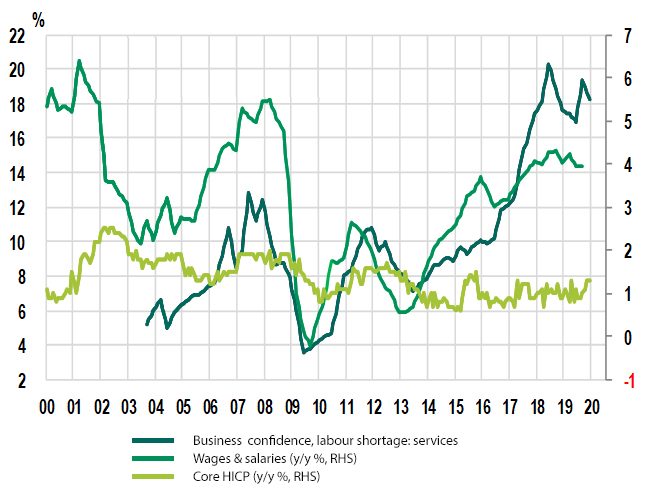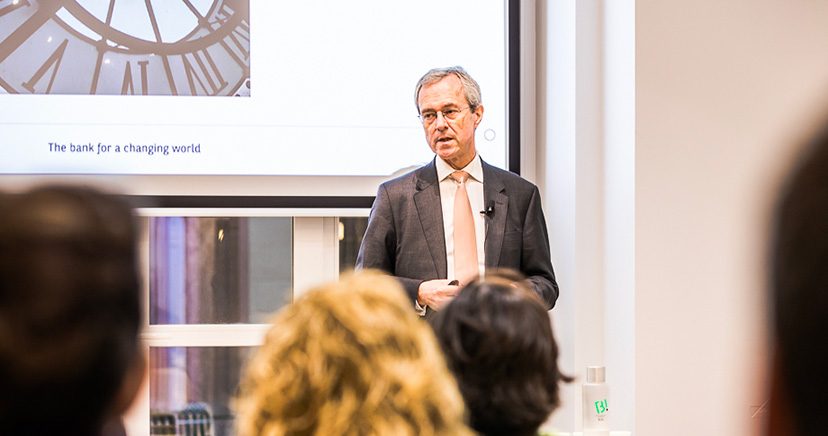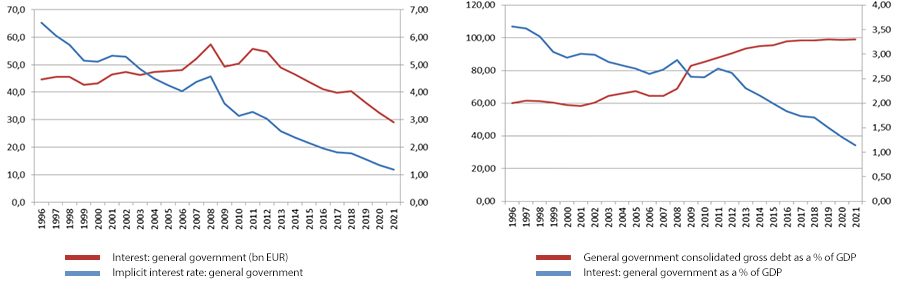There was a time, BNP Paribas Group Chief
Economist William De Vijlder told CIB’s Women in Business Club, when things
looked fairly clear in economics. That time is over, and now we seem to be
looking through a cracked mirror, where all interest rates in developed
countries – central bank policy rates,
government bond yields and corporate bond yields – seem to be stuck on “low”.
This is not just due to central banks.
There are both structural and cyclical reasons for these low rates. A major
structural reason is ageing: interest rates are pushed down by ever more people
saving for retirement. Slower growth and risk aversion post-crisis are other
structural reasons.
The main cyclical reasons are low inflation
and monetary policy. De Vijlder spoke of a “new world” where inflation is
lacking despite wage growth accelerating as labour shortages increase. 
In the eurozone, pockets of inflation
remain but these are not broad-based, leaving the overall figure at 1.3%
on an annual basis in December 2019 – well under the European Central
Bank’s inflation target of “below but close to 2%”.
Targets and anchors
Inflation targeting began in New Zealand back in 1990. Then, the aim was to combat high inflation by setting a target and conducting the appropriate monetary policy to anchor inflation expectations. At the time, this functioned well as a way of bringing inflation down. This approach was adopted in a large number of countries.The world has changed a lot since then, with inflation now generally too low compared to targets. This has led to highly accommodative monetary policy – central banks trying to stimulate economic growth by lowering interest rates, aiming to bring the inflation rate back up to target. However, the problem is that growth is already sustained and there is a shortage of labour – it’s as if central banks keep pressing on the accelerator but the maximum speed has already been reached.
However, if we were to lower the inflation target now, people would lose trust in it as an anchor, which would make monetary policy less effective.

Zombies and bubbles
Highly accommodative monetary policy is intended to increase credit demand and, indirectly, spending, growth in activity and employment. However, it can also have unintended consequences. Over longer periods, if very low policy rates are combined with quantitative easing (where central bank buys financial assets to inject liquidity into the economy), there is concern that these unintended consequences might end up outweighing the intended ones.One important unintended consequence is the existence of “zombie” firms. These are companies that are under financial strain and can only “stagger” on thanks to low interest rates on their debt. Such companies, which under more normal circumstances would have ceased their activities, tie up capital that could otherwise have been invested in healthy companies, stymying the growth of these latter firms, clogging up the market and weighing down entire sectors.
Other unintended consequences include an ongoing increase in debt levels – creating concern about elevated corporate debt and/or real estate bubbles, for example – and pressure on savers and pension funds as they struggle in their hunt for yield. Company valuations can soar as low rates gradually push up asset prices, too.
Another consequence is the illusion of comfort for public finances. Interest payments have gone down with bond yields. In France, for example, like in most other eurozone countries, government debt has risen as a percentage of GDP, but interest charges have declined. If interest rates should rise again, interest payments will increase too, which could put countries under pressure.

Stranger than fiction: money for your mortgage
De Vijlder cited Ian McEwan’s book The Cockroach, which references “Reversalism”, a system under which the flow of funds in the economic system is reversed – meaning for example that people pay a salary in order to be allowed to work.Although this arrangement is purely fictional, we now seem to be moving in this direction, with a Danish bank launching the world’s first negative interest rate mortgage in August 2019. This idea may seem counterintuitive, but the bank has to pay interest to deposit its funds at the central bank, and it is better off paying clients to take the money than having to pay a higher rate to the central bank.
When – and how – will it end?
A journalist told ECB President Christine Lagarde in December 2019 that her teams had said inflation would be at 1.6% at the end of 2022, and asked her whether she would be satisfied with that. She replied that while it would be a move in the right direction, she would not be satisfied – implying it would not be enough for her to increase rates.The ECB deposit rate first turned negative in June 2015. When might it turn positive again? What conditions could bring higher longer-term interest rates? These are vital questions for anyone who wants or needs to invest, or companies that need funding. There are four things that could bring these conditions about:
1. Significantly faster real growth on a sustained basis – this is currently extremely unlikely.
2. Accelerating inflation – this could happen if economic growth were to speed up.
3. A lasting reduction in uncertainty: when this falls, rates rise because the interest of investing in safe-haven assets decreases. However, such a reduction is notoriously hard to predict and for the moment does not seem probable.
4. Modification of the definition of the inflation objective, something that will be discussed in the ECB’s review of its monetary policy strategy, which includes a review of the quantitative formulation of price stability.
William De Vijlder’s presentation was introduced by Alain Papiasse, CIB Chairman and chair and sponsor of the BNP Paribas CIB Women in Business Club. The Club was created in 2016, in the context of a partnership with the Women’s Forum launched in 2015. The event’s carbon footprint was offset by ClimateSeed, BNP Paribas’ B-to-B digital carbon offsetting platform.
